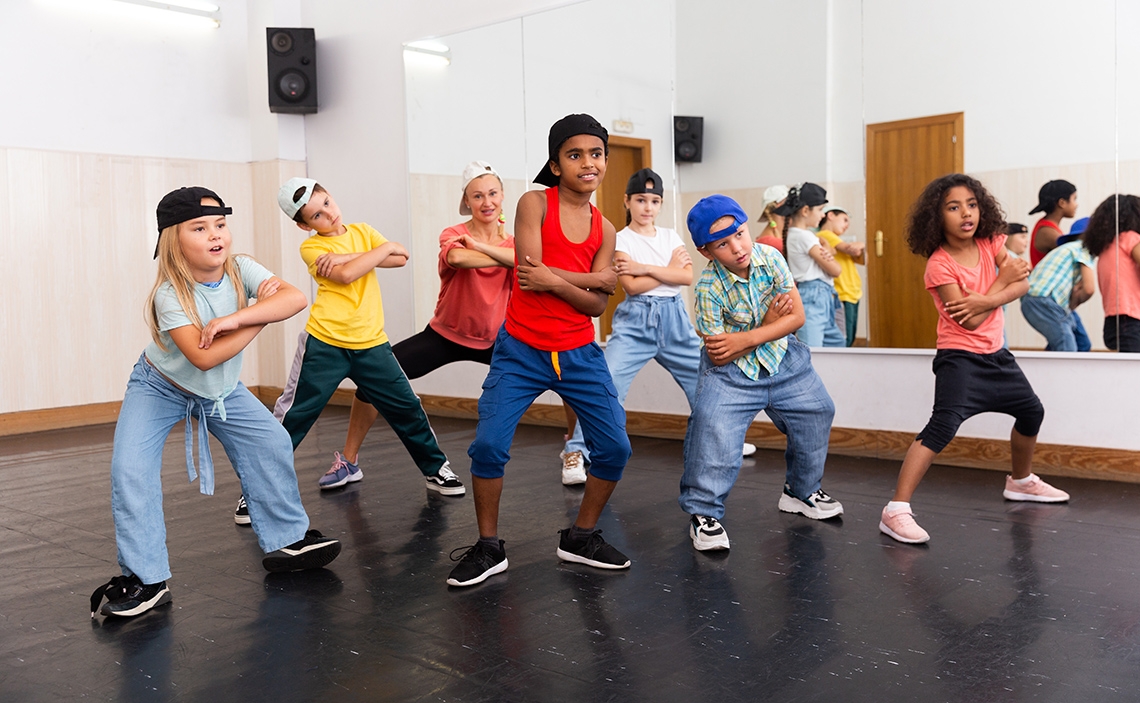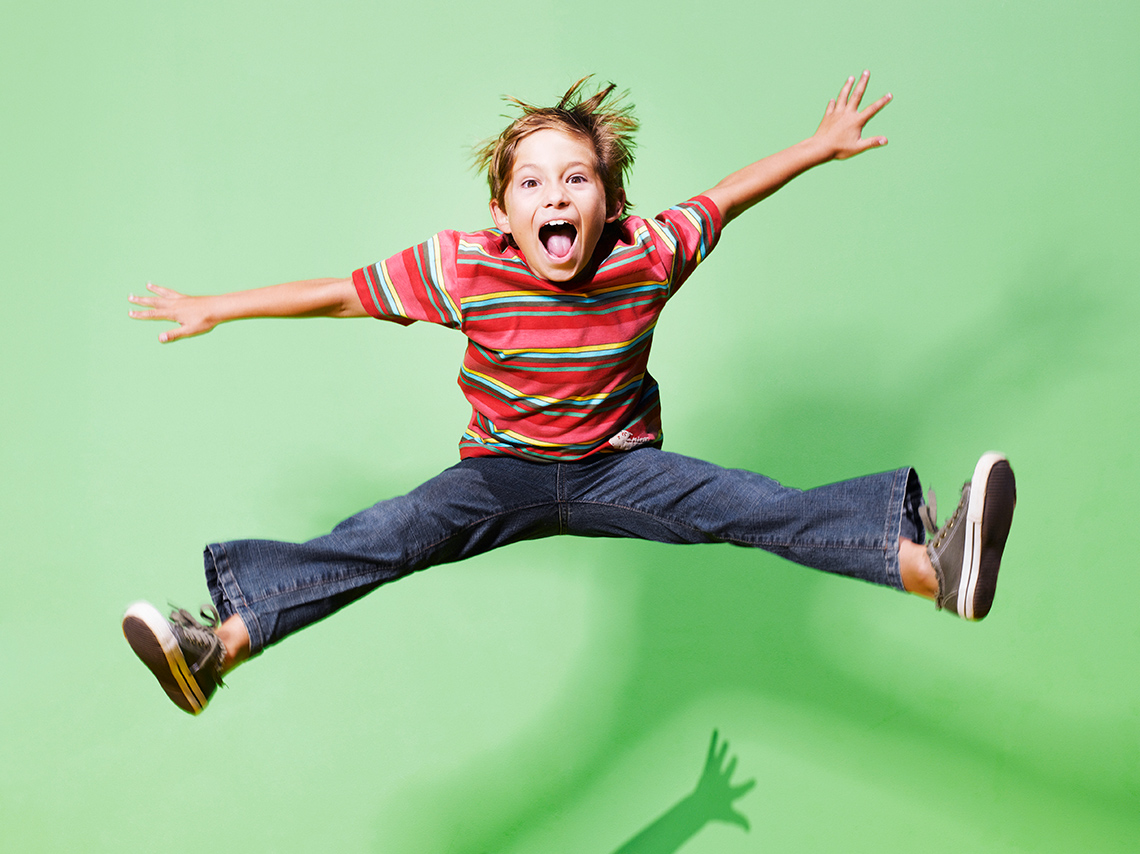Minds On
Today’s vocabulary
Press the following tabs to access the definitions for today’s vocabulary.
Let’s get started!
Let’s begin by thinking about how movement can be used to communicate ideas and feelings in dance.
Examine the next video with a dance piece from the show So You Think You Can Dance and consider the following questions:
- What do you think is happening in this dance piece?
- What feelings do you think the dancers are trying to communicate to the audience?
Record your ideas digitally, orally, or in print.
Action
Get ready, get set…

Dancing to communicate ideas and feelings
The language of dance is just like any other type of language. It is meant to communicate an idea or feeling using the body.
Think of it as having a conversation.
Sometimes a person will change the rise and fall of their voice to communicate an emotion.
The same is true in dance, but usually, a dancer will use the elements of dance instead of their voice.
Check out the following examples:
- A dancer using quick, light, bouncy movements might be sharing a feeling of happiness.
- A dancer using slow, heavy, low to the floor movements might be sharing a feeling of sadness.
The elements of dance are:
- body
- space
- time
- energy
- relationship
Examine the video from the Minds On section a second time.
This time consider how the elements of dance are used to communicate the idea/feeling of the dance.
Press the ‘Elements of Dance’ button to access the reference guide to help you.
Elements of Dance
|
Body |
What is the dancer’s body doing? Consider the following questions:
|
|---|---|
|
Space |
Where is the dancer’s body moving? Consider the following questions:
|
|
Time |
When is the dancer’s body moving? (In relation to time) Consider the following questions:
|
|
Energy |
How is the dancer’s body moving? Consider the following questions:
|
|
Relationship |
Who or what is the dancer’s body moving with? Consider the following questions:
|
Check out the following video with a dance piece from the show So You Think You Can Dance one more time.
Once you have examined the video from the Minds On section, answer the following questions. Select the correct answer, then press the ‘Check Answer’ button to find out how you did.
Now, let’s use the elements of dance to explain how we know what the idea and feeling of the dance from the video is.
Use the Elements of Dance reference guide to help you.
Press the ‘Elements of Dance’ button to access a chart with descriptions of the elements of dance.
|
Body |
What is the dancer’s body doing? Consider the following questions:
|
|---|---|
|
Space |
Where is the dancer’s body moving? Consider the following questions:
|
|
Time |
When is the dancer’s body moving? (In relation to time) Consider the following questions:
|
|
Energy |
How is the dancer’s body moving? Consider the following questions:
|
|
Relationship |
Who or what is the dancer’s body moving with? Consider the following questions:
|
Portfolio
Portfolio

Complete the Communicating Ideas and Feelings in Dance graphic organizer in your notebook or using the following fillable and printable document to explain how the elements of dance help communicate ideas and feelings in the video you examined. If you would like, you can use speech-to-text or audio recording tools to record your thoughts. Consider adding your work to your portfolio.
|
Elements of dance |
Describe the movements used… |
|---|---|
|
Body |
|
|
Space |
|
|
Time |
|
|
Energy |
|
|
Relationship |
Press the ‘Activity’ button to access Communicating Ideas and Feelings in Dance.
Once you have completed your graphic organizer, press the ‘Sample Answer’ button to check out some possible answers.
Communicating Ideas and Feelings in Dance
Idea and/or feeling:
Two dancers playing a baseball game.
The feelings the dancers are trying to communicate might be excitement and enjoyment.
|
Elements of Dance |
Describe the movements used… |
|---|---|
|
Body |
Gesture of sliding across floor to show ‘safe,’ swinging a baseball bat to hit a baseball. |
|
Space |
Floor and air pathways such as the curved shape while swinging a baseball bat, a lot of turns and movements across the floor in straight and diagonal pathways. |
|
Time |
Fast-paced movements. |
|
Energy |
Bouncy, light movements as well as strong, explosive movements. |
|
Relationship |
Dancers meet for a partner movement where one partner stands, and the other partner grasps their hands and does a jump using their partner as a base. Dancers part to do some movements including swinging the baseball bat to show playing in the game. They dance the same movements at the same time to show teamwork. |
Go!
Explore the next video with another dance piece from the show So You Think You Can Dance and complete the following activity.
Using what you learned from the ‘Get ready, get set…’ section you just reviewed, explain how the elements of dance help to communicate the idea and feeling of this dance piece.
Choose at least two elements.
Use the “Elements of Dance” reference guide to help you.
Press the ‘Elements of Dance’ button to access a chart with descriptions of the elements of dance.
|
Body |
What is the dancer’s body doing? Consider the following questions:
|
|---|---|
|
Space |
Where is the dancer’s body moving? Consider the following questions:
|
|
Time |
When is the dancer’s body moving? (In relation to time) Consider the following questions:
|
|
Energy |
How is the dancer’s body moving? Consider the following questions:
|
|
Relationship |
Who or what is the dancer’s body moving with? Consider the following questions:
|
Access the following video with another dance piece from the show So You Think You Can Dance.
Portfolio
Portfolio
Complete the Communicating Ideas and Feelings in Dance graphic organizer in your notebook or using the following fillable and printable document to explain how the elements of dance help communicate ideas and feelings in the video you examined. Choose at least two elements of dance. If you would like, you can use speech-to-text or audio recording tools to record your thoughts. Consider adding your work to your portfolio.
|
Elements of Dance |
Describe the movements used… |
|---|---|
|
Body |
|
|
Space |
|
|
Time |
|
|
Energy |
|
|
Relationship |
Press the ‘Activity’ button to access Communicating Ideas and Feelings in Dance.

Consolidation
Putting it all together

Think of an idea and/or feeling for a possible dance piece.
How might the elements of dance help to communicate your idea and feeling for the dance piece? Choose at least two elements of dance:
- body
- space
- time
- energy
- relationship
Record your ideas using the following graphic organizer provided or using another method of your choice.
Portfolio
Portfolio
Complete the My Dance Piece graphic organizer in your notebook or using the following fillable and printable document to explain how the elements of dance help communicate the idea and feeling of the dance piece you just examined. If you would like, you can use speech-to-text or audio recording tools to record your thoughts. Consider adding your work to your portfolio.
|
Elements of Dance |
Describe the movements that could be used… |
|---|---|
|
Body |
|
|
Space |
|
|
Time |
|
|
Energy |
|
|
Relationship |
Press the ‘Activity’ button to access My Dance Piece.
Reflection
As you read through these descriptions, which sentence best describes how you are feeling about your understanding of this learning activity? Press the button that is beside this sentence.
I feel…
Now, record your ideas using a voice recorder, speech-to-text, or writing tool.